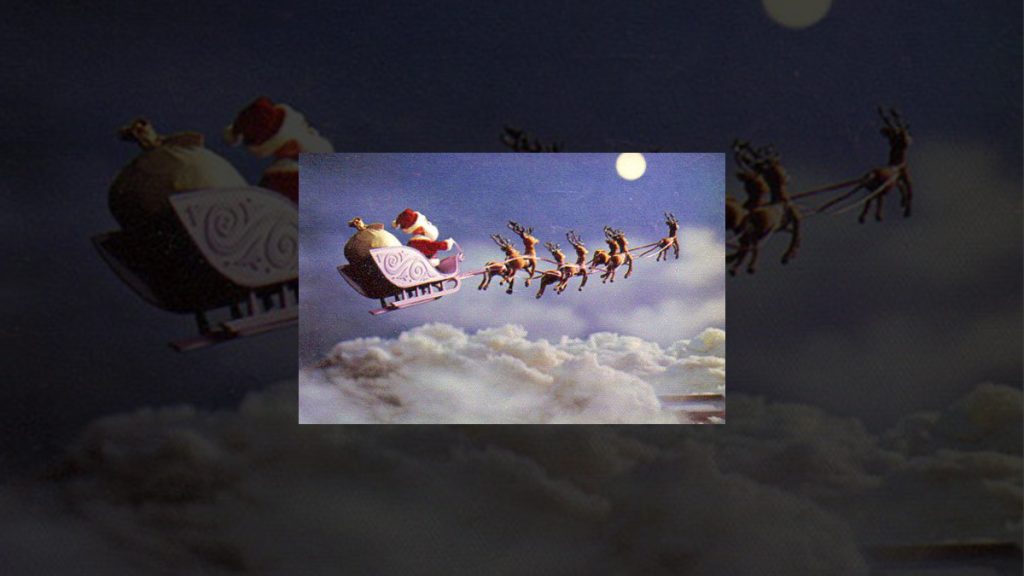Never mind about the reindeer who saved Christmas. Meet the woman who rescued Santa & Rudolph
You remember the end of "Rudolph the Red-Nosed Reindeer,"
right? As this stop-motion holiday special draws to a close, Santa Claus
first turns to the camera and wishes the audience watching at home a
Merry Christmas. Then Santa and his sleigh — pulled by Rudolph and a
team of six other reindeer — flies off into a moonlight sky.
Copyright Classic Media Inc. All rights reserved
That seems like a pretty happy ending, don't you think? Well, in real
life, the 9-inch tall Claus and 5-inch tall reindeer puppet that were
used in the making of this 1964 Rankin/Bass production wound up spending
the next 40 years under less than ideal conditions.
First NBC (which initially aired this holiday special on December 6,
1964 on its "General Electric Fantasy Hour" program) had these puppets
shipped from Japan to New York City so that they could then be used as
part of the publicity campaign for this program. Once that work was
done, Santa and Rudolph were returned to Arthur Rankin, Jr. and Jules
Bass (i.e. the two executives who ran Videocraft International, Ltd.,
the production company that actually made "Rudolph the Red-Nosed Reindeer"). And eventually Arthur and Jules gifted these two puppets to one of Rankin/Bass's longtime secretaries.
1964 publicity photo for the initial airing of "Rudolph
the Red-Nosed Reindeer" on NBC's "General
Electric Fantasy" show
"And she then made Santa and Rudolph part of her family's holiday
decorations," explained Seamus Walsh, one of the modern stop-motion
masters who now works at Screen Novelties,
a Los Angeles-based animation studio which later played a key role in
these puppets' restoration. "And that secretary's children and
grandchildren then spent the next 40 years or so playing really roughly
with Rudolph and Santa. Throwing that little reindeer puppet through the
air pretending that he could fly and force-feeding Santa candy and
chocolate."
In the end, the Rudolph puppet wound up with a snapped neck. Not to
mention a missing glowing red nose. And poor Santa lost his fluffy white
eyebrows as well as half his mustache. And since that they no longer
looked like the characters who had appeared in that now-classic holiday
special, Santa and Rudolph were now retired to the attic.
Appraiser Simeon Lipman examines the Rudolph & Santa Claus
stop-motion puppets during a May 2006 broadcast of PBS's
"Antique Roadshow" program. Copyright WGBH
Education Foundation. All rights reserved
And they probably would have stayed there — alone and forgotten like
those forlorn playthings on the Island of Misfit Toys — if it hadn't
been for the secretary's nephew. Who — when he came upon Rudolph and
Santa up in the family's attic in 2005 — decided to bring this
stop-motion puppets on PBS's Antiques Roadshow and find out what they might now possibly be worth.
At that time, Santa and Rudolph were appraised for $8,000 – $10,000
for the pair. The secretary's nephew then decided to sell these holiday
icons to Kevin A. Kriess, a lifelong fan of the Rankin/Bass TV specials.
And Kriess' first goal was to restore these stop-motion puppets to
pristine condition.
Robin Walsh with the Santa Claus stop-motion puppet
"Which is why Kevin then reached out to us. Or — rather — my wife Robin, who handles restoration for the Center for Puppetry Arts
in Atlanta," Walsh continued. "And she was the one who then handled all
of the restoration work that needed to be done on the Santa and
Rudolph puppets."
Robin took an almost Hippocratic approach to this restoration
project. Gently peeling back Rudolph's tattered fur to reveal …
Robin begins her restoration work on the Rudolph stop-motion puppet
Reveal what? To learn more about what Robin Walsh actually did to restore the Santa Claus & Rudolph stop-motion puppets, you can either click on the headline above or go straight to http://www.huffingtonpost.com/jim-hill/rudolph-the-red-nosed-reindeer-puppets_b_2357403.html.
